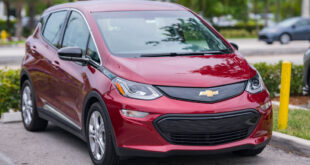How Electric Cars Work: Technology Behind the Revolution Electric cars (EVs) are rapidly gaining traction worldwide as a cleaner, more sustainable alternative to traditional internal combustion engine (ICE) vehicles. Understanding how electric cars work is essential for making informed decisions about adopting this transformative technology. In this article, we will explore the key components, working mechanisms, benefits, and challenges of electric vehicles in an easy-to-understand manner.
Introduction to Electric Cars
Electric cars use electricity stored in rechargeable batteries to power an electric motor. Unlike traditional vehicles that burn fossil fuels, EVs rely on cleaner energy sources, resulting in reduced emissions and environmental impact.
How Electric Cars Work: The Core Components
To understand how EVs operate, let’s break down their key components:
1. Electric Motor
The motor is the heart of an electric car, converting electrical energy into mechanical energy. Common types of electric motors in EVs include:
- AC Induction Motors
- Permanent Magnet Synchronous Motors (PMSM)
- Brushless DC Motors (BLDC)
2. Battery Pack
EVs use lithium-ion batteries due to their high energy density and durability. These batteries store electrical energy and are rechargeable through various charging methods.
3. Inverter
The inverter plays a crucial role by converting direct current (DC) from the battery into alternating current (AC) for the motor.
4. Controller
The controller regulates the power flow from the battery to the motor, ensuring optimal performance based on the driver’s input.
5. Charging Port
The charging port connects the vehicle to an external power source for recharging. It supports different charging levels:
- Level 1: Standard home outlet (120V).
- Level 2: Faster home and public charging (240V).
- DC Fast Charging: Rapid charging at public stations.
The Working Mechanism of Electric Cars
- Charging the Battery
The process begins with plugging the EV into a charging station or power outlet. Electricity flows into the battery, storing energy for future use. - Power Delivery to the Motor
When the driver accelerates, the controller manages the power flow from the battery to the electric motor. - Electric Motor in Action
The motor converts electrical energy into mechanical energy, rotating the wheels to move the car. - Energy Recovery
During braking, regenerative braking systems convert kinetic energy back into electrical energy, recharging the battery slightly.
Benefits of Electric Cars
- Eco-Friendly: Zero tailpipe emissions reduce air pollution.
- Lower Operating Costs: Electricity is generally cheaper than gasoline, and EVs require less maintenance.
- Quiet Operation: Minimal noise pollution due to the absence of a combustion engine.
- Energy Efficiency: Electric motors are highly efficient compared to ICE engines.
Challenges of Electric Cars
- Limited Range: EVs have a shorter range compared to traditional vehicles, though this is improving.
- Charging Infrastructure: Availability of charging stations varies by location.
- Higher Upfront Cost: EVs are often more expensive initially, though incentives can offset costs.
- Battery Longevity: Battery degradation over time may affect performance.
10 Tips for Electric Car Owners
- Use Level 2 chargers for faster charging at home.
- Plan long trips around available charging stations.
- Maintain optimal tire pressure for better efficiency.
- Avoid frequent rapid charging to prolong battery life.
- Use regenerative braking effectively.
- Update your EV’s software regularly.
- Minimize energy usage by turning off unnecessary features.
- Store your EV in a moderate climate to protect the battery.
- Leverage government incentives for cost savings.
- Monitor battery health and plan replacements as needed.
10 Frequently Asked Questions About Electric Cars
- How long does it take to charge an EV?
Charging time varies by charger type: Level 1 (8-12 hours), Level 2 (4-6 hours), and DC fast charging (30-60 minutes). - Are electric cars suitable for long trips?
Yes, with careful planning and access to charging infrastructure. - What is the lifespan of an EV battery?
Most EV batteries last 8-15 years, depending on usage and care. - Can I charge my EV at home?
Yes, using a standard outlet or a dedicated Level 2 charger. - Are electric cars more expensive to maintain?
No, they have fewer moving parts and lower maintenance needs than ICE vehicles. - Do EVs perform well in cold weather?
Cold weather can reduce range, but modern EVs are equipped to handle such conditions. - What happens if an EV runs out of battery?
Similar to running out of gas, the car will stop, requiring roadside assistance or towing. - Are EVs safe in accidents?
Yes, they undergo rigorous safety testing and often have a low center of gravity for stability. - Can I tow with an electric car?
Some EVs are designed for towing, but always check manufacturer specifications. - Is it worth buying an electric car now?
Yes, given the growing infrastructure, incentives, and environmental benefits.
Conclusion
Electric cars represent the future of transportation, offering eco-friendly, efficient, and innovative solutions to global energy challenges. While they come with their set of challenges, advancements in technology are rapidly addressing these issues.
By understanding how electric cars work and their benefits, you can make an informed decision about whether an EV fits your lifestyle and needs. Embracing this technology contributes to a cleaner, greener planet and a sustainable future.
 oto car insurance used car repair
oto car insurance used car repair
